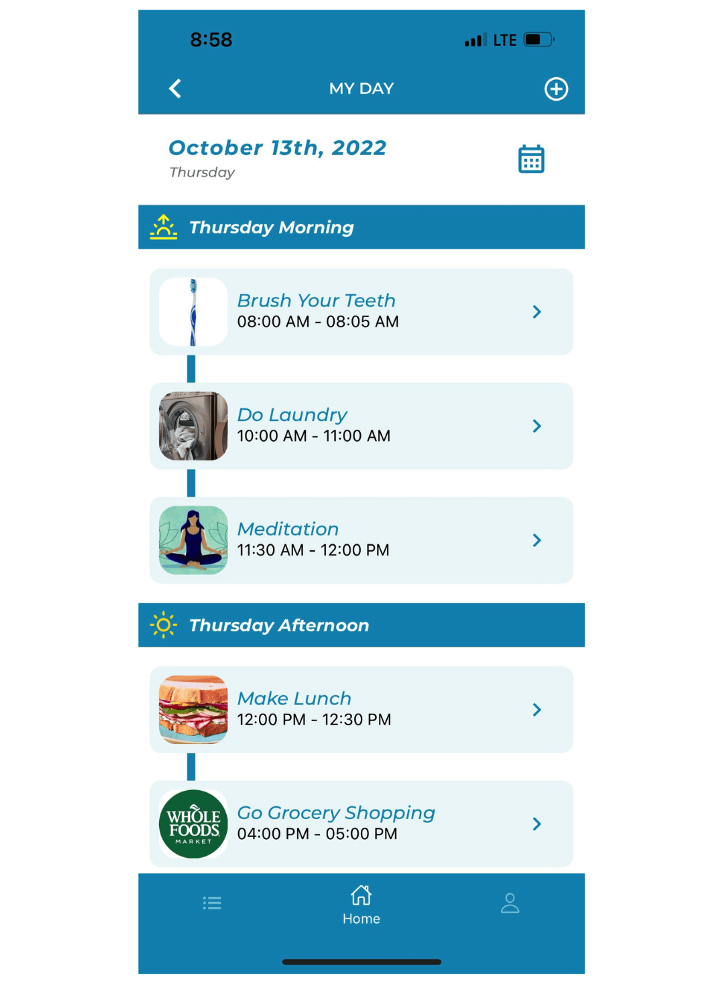When it comes to communicating, autistic adults can have various challenges. If you’re a caretaker for or close in another way to someone with autism spectrum disorder, it’s essential to understand their struggles and develop good communication strategies. Below, we’ll share important information and answers to common questions about communication with autistic adults.

You might also be interested in reading: Neurodivergent Dating: How Parents Can Support Successful Experiences
How does autism affect communication in adults?
Many people with autism, including adults, struggle with social communication. Communication difficulties that people with autism spectrum disorder experience are due to a lack of verbal and nonverbal language skills, deficits in interacting with others and the world around them, and sensory challenges.
Possible Communication Challenges
A primary challenge that autistic individuals face is difficulty in social settings and with communication. While it may appear that communication setbacks are a choice, it’s important to understand that it’s not. The adversities mentioned above can make communication with autistic adults hard and vice versa.
Communicating with autistic adults can be easier if you’re able to understand the specific communication challenges they face. These can include:
- Difficulty making eye contact
- A tendency to repeat phrases
- Problems starting and maintaining conversations
- Difficulty reading body language and understanding figurative language and facial expressions
- Easily distracted, especially when there’s sensory overload with noises, lights, etc.
- Unable to focus on “uninteresting” topics
- Stimming behaviors, which are repetitive behaviors that self-soothe
You may not always notice these challenges because it’s not uncommon for autistic people to mask these behaviors during social interactions. We’ll talk more about masking below when we address stimming.
What is the best way to communicate with autistic adults?
As you can see, autistic adults can face many challenges during social situations. However, there are communication strategies you can use for successful conversations and interactions.

Here’s a quick overview of things you can do when communicating with an autistic person. Below, we’ll go into more detail.
- Make sure you have their attention.
- Be clear and concise.
- Stay on topic.
- Welcome questions for clarification.
- Use visuals.
- Speak to them like adults.
- Take time to listen.
- Avoid sensory overload.
- Accept stimming behaviors.
Make sure you have their attention.
First, you want to make sure you have their attention. It’s best to communicate in a place where there aren’t too many other things going on, like sounds and lights. A helpful way to ensure you have their attention is to start your conversation by asking a clear, straightforward question.
Be clear and concise.
Using figurative language or sarcasm can be confusing for an autistic person. Be clear and concise, using literal language that’s easy to understand.
While you want to give as much information as possible to make sure they understand you, you don’t want to overwhelm them with too many details. You can avoid this by pausing to give time to process your conversation and ask questions if needed.
Choose topics carefully.
Some autistic people can have trouble talking about topics they aren’t interested in. While it might be important to talk about uninteresting topics sometimes, it can help them stay focused if you stick to the subject and make the conversation as simple and straightforward as possible.
Use visuals.
If possible, use visuals to support communication with autistic adults. Visual support can help since language can be challenging to use and understand for some autistic adults.
For example, a visual schedule and pictures can be very useful when you’re talking about daily routines. If you’re interested in learning more about visual schedules, check out NFlyte, a platform that helps adults with autism or other disabilities to live independently.

Speak to them like the adults that they are.
Although they have communication challenges, they’re still adults and should be addressed as one. You want to avoid offending them by speaking to them as a child, as this could create more significant issues with communicating.
Take time to listen.
It’s not uncommon for autistic people to ask for clarification or answer you before you finish talking. Be open to questions, and you might avoid continuing what you’re saying if they’ve anticipated your question accurately.
Avoid sensory overload.
While you want to have conversations in places that don’t have distractions, you should also avoid giving too much information that could also cause an overload for a person with an autism spectrum disorder. This is why it’s best to be straightforward, clear, and concise. Only discuss necessary information and leave out insignificant details.
Accept stimming behaviors.
Autistic people may display stimming behaviors like rocking or tapping. This helps them manage their emotions and can even help them have successful social interactions.
This article discusses masking and how some people with autism spectrum disorder hide stimming behaviors. As someone who wants to be able to communicate with the autistic adult in their life, it’s best to stay non-judgemental and even help them embrace the traits and behaviors that make them who they are.
What should you not say to someone with autism?
Now that we know more about successful communication with autistic adults and how to support them during conversations, let’s touch on some things you shouldn’t say to them.
First and foremost, never tell them to stop doing something. It’s important to remember that they lack skills that many people have to help with communicating. The key to helping them with communication skills is having regular conversations with them and encouraging them to practice social skills.
You also want to avoid the common phrase, “But you seem normal!” This statement can be harmful because it supports the misconception that autism looks a certain way and may drive people to mask their autism. Autism isn’t “one size fits all” and looks different from person to person.
Communication With Autistic Adults: Final Thoughts
Although autistic adults struggle with communication, it’s certainly possible to have successful conversations and social interactions. We hope this information and answers to common questions have offered you helpful insight.
If you’re a parent or caretaker of an adult or adolescent with autism, you might be interested in learning about NFlyte. NFlyte is a platform that helps people with autism or other intellectual or developmental disabilities live independently. You can learn more about NFlyte here.




1 Comment.
Testing